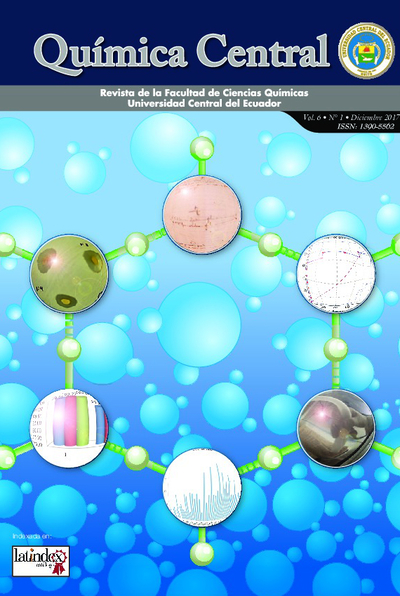Isoconversión Isotermal para una estimación rápida de la vida útil de comprimidos de Ácido acetil salicílico
DOI:
https://doi.org/10.29166/quimica.v6i1.1414Keywords:
Isoconversion, Shelf life, Acetylsalicylic AcidAbstract
Long-term stability studies of pharmaceutical forms require a large amount of resources and time for their development.
Alternatively, more efficient methods have been proposed, among these, the paradigm of isothermal isoconversion
is highlighted to estimate the useful life in a few weeks. This approach recognizes pharmaceutical forms
as heterogeneous systems without a single kinetic order, it establishes a maximum percentage of degradation and
assumes the same kinetics for all degradation processes independently of the conditions in which they are carried
out, and it also includes in the calculations the effect of humidity through a modification to the Arrhenius equation.
The objective of the present investigation was to apply the isothermal isoconversion in order to estimate the shelf-life
of the acetylsalicylic acid tablets in few weeks. Six combinations of humidity and temperature were used to establish
the necessary time for the formation of 0.15% salicylic acid, being calculate activation energy too, the Monte
Carlo method was applied with 5000 simulations considering values of temperature and relative humidity within a
certain range. The estimated shelf-life life for raw material was 415.5 days and 35.6 days for tablets. This method
demonstrates in a short time the impact of the excipients and the manufacturing process on the stability of a drug.
Downloads
References
Waterman (2002). Improved Protocol and Data Analysis for Accelerated Shelf-Life Estimation of Solid. Pfizer Inc, 3-5.
Waterman (2007). Improved Protocol and Data Analysis for Accelerated Shelf-Life Estimation of Solid Dosage Forms. Pharmaceutical Research, z4(4), 780-790.
Huynh (2009). Handbook of Stability Testing in Pharmaceutical Development (primera ed.). New York: Springer.
Vyazovkin (2015). Isoconversional Kinetics of Thermally Stimulated Processes. Alabama: University of Alabama. Research, 4-5.
Alcocer R.,Santamaría,J. (2016). Isoconversión, un método efectivo en la estimación del tiempo de vida util de formas farmacéuticas sólidas. Química Central 5 (1):41-58
Porter (2013). Degradation of Pharmaceutical Solids Accelerated by Changes in Both Relative Humidty and Storage Temperature and Combined Storage Temperature and Storage Relative Humidity Design Space for Solid Products. Institute of Validation Technology, 73-92.
ICH. (2003). Q1A (R2) Stability Testing of New Drug Substances and Products. Orckville Pike: ICH.
Waterman (2014). A Scientific and Statistical Analysis of Part 1: Accuracy of Fitting Methods. Journal of Pharmaceutical Sciences, 3000-3006.
Cunningham (2001). Formulation of Acetylsalicylic Acid Tablets for Aqueous Enteric Film Coating. Pharmaceutical Technology Europe, 44-53.
Downloads
Published
How to Cite
Issue
Section
License
Los originales publicados en las ediciones impresa y electrónica de esta revista QUÍMICA CENTRAL son propiedad de la Universidad Central del Ecuador, siendo necesario citar la procedencia en cualquier reproducción parcial o total.
La propiedad intelectual de los artículos publicados en revista QUÍMICA CENTRAL pertenece al/la/los/las autor/a/es/as, y los derechos de explotación y difusión científica están direccionados para la revista QUÍMICA CENTRAL mediante CARTA DE AUTORIZACIÓN DE PUBLICACIÓN publicada en esta plataforma.


